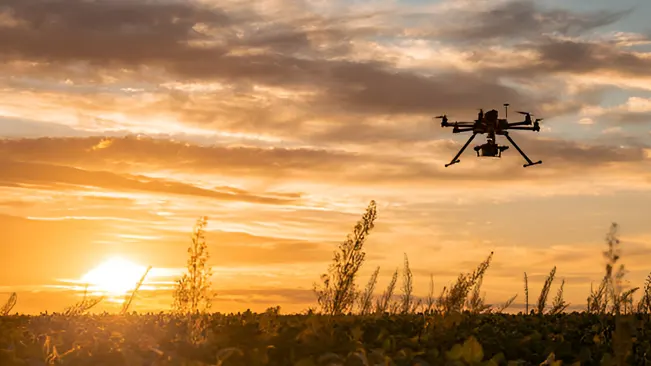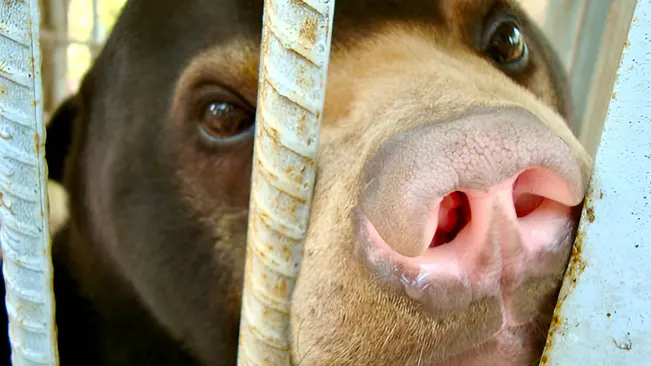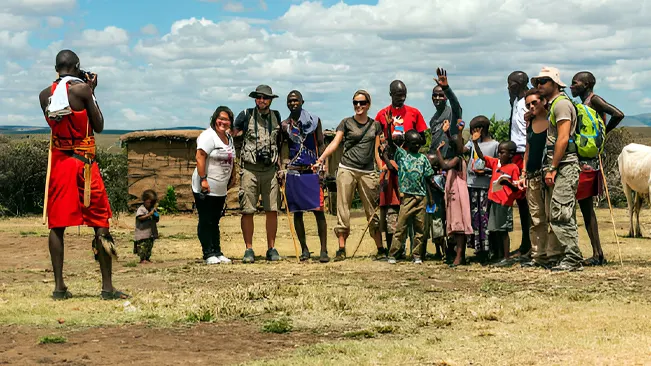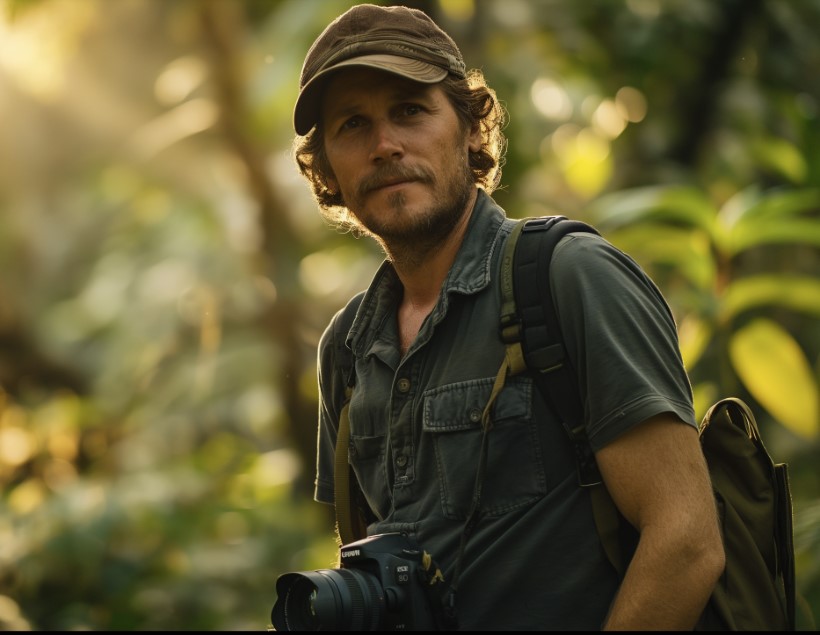How To Stop Poaching: 9 Ways To Protect Wildlife From Trafficking
- July 30, 2024
- 0 comment
Poaching and wildlife trafficking are devastating threats to global biodiversity. These illegal activities not only put endangered species at risk but also disrupt delicate ecosystems, harm local economies, and even increase the spread of disease. With the growing global demand for animal products, it’s more urgent than ever to take action. Drawing from personal experiences and proven strategies, I’ve outlined nine actionable steps to help stop poaching and protect wildlife from trafficking.

Understanding Poaching and Wildlife Trafficking
To tackle the issue effectively, we must first understand the scope of poaching and wildlife trafficking. Poaching involves the illegal hunting, capturing, or killing of animals, often in protected or restricted areas. Wildlife trafficking goes a step further it’s the illegal trade of animals and their products, fueling a multi-billion-dollar industry. This demand is driven by the allure of exotic pets, traditional medicine ingredients, and luxury items made from animal parts. Recognizing these drivers is crucial for implementing anti-poaching measures and curbing the illegal wildlife trade.
1. Strengthening and Enforcing Wildlife Protection Laws
Strengthening and enforcing wildlife protection laws is one of the most impactful ways to combat poaching and wildlife trafficking. From my perspective, ensuring these laws are robust and effectively applied requires a multi-faceted approach:

- Legislation: Governments need to establish clear and comprehensive laws that define and heavily penalize poaching and trafficking activities. Severe consequences, such as substantial fines and long prison terms, can serve as strong deterrents.
- Implementation: Law enforcement agencies play a critical role. Properly training and equipping rangers, customs officials, and border patrols ensures consistent enforcement and the protection of vulnerable species.
- International Cooperation: Since wildlife trafficking crosses borders, global collaboration is essential. Initiatives like the Convention on International Trade in Endangered Species of Wild Fauna and Flora (CITES) help countries work together to regulate and monitor the trade of endangered species.
Case Study: Operation Thunderbird
An excellent example of international cooperation is Operation Thunderbird, coordinated by INTERPOL and the World Customs Organization. This operation spanned 43 countries, targeting wildlife trafficking networks. It led to numerous arrests and the seizure of thousands of illegal wildlife items, demonstrating the power of global anti-poaching initiatives.
2. Supporting Community-Based Conservation Initiatives
Engaging local communities in conservation efforts is vital for sustainable wildlife protection. From my experience, empowering communities ensures they become active participants in protecting wildlife rather than resorting to harmful practices.

- Education and Awareness: Teaching communities about the ecological and economic benefits of wildlife conservation fosters a sense of ownership and responsibility. This understanding is essential for long-term commitment to protecting endangered species.
- Alternative Livelihoods: Offering sustainable income opportunities, such as ecotourism or agriculture, helps reduce reliance on poaching. By creating financial stability, these programs make conservation a viable choice for communities.
- Empowerment: When local people are involved in decision-making and given control of conservation projects, they are more likely to protect wildlife resources for future generations.
Example: The CAMPFIRE Program
A great example of community-based conservation is Zimbabwe’s CAMPFIRE (Communal Areas Management Programme for Indigenous Resources). This initiative empowers communities to manage their wildlife resources. By directly benefiting from ecotourism and sustainable hunting, local people are incentivized to protect wildlife rather than exploit it. CAMPFIRE demonstrates how economic incentives and community ownership can drive conservation success.
3. Enhancing Anti-Poaching Technologies
Advancements in technology are transforming the fight against poaching and wildlife trafficking. From my perspective, these tools not only enhance monitoring capabilities but also empower conservationists and law enforcement to act quickly and effectively.

- Drones: Equipped with cameras and thermal imaging, drones can monitor vast, remote areas and detect poaching activities in real time. Their ability to provide aerial surveillance makes them invaluable for anti-poaching measures.
- Camera Traps: Automated cameras capture images of both wildlife and potential poachers, offering critical data for conservationists and enforcement agencies. These devices act as silent sentinels in protected areas.
- Satellite Tracking: GPS collars and satellite tracking systems monitor the movements of endangered animals. Alerts are sent to rangers when animals wander near high-risk areas, enabling swift intervention.
Innovation in Action: SMART Technology
The Spatial Monitoring and Reporting Tool (SMART) exemplifies how technology can revolutionize conservation. This software collects and analyzes data from GPS devices, camera traps, and ranger patrols. By integrating these inputs, SMART enables more precise management of wildlife areas and better responses to poaching threats.
4. Raising Public Awareness and Advocacy
Public awareness and advocacy are crucial for combating poaching and wildlife trafficking. From my experience, educating and engaging the public can drive meaningful change and create widespread support for conservation efforts.

- Campaigns: Social media, documentaries, and public service announcements effectively highlight the devastating impacts of poaching. These platforms inspire action and encourage support for wildlife conservation strategies.
- Celebrity Endorsements: High-profile figures can amplify conservation messages, reaching broader audiences and motivating people to get involved. Their influence can bring attention to anti-poaching initiatives.
- Education Programs: Integrating wildlife conservation topics into school and university curricula fosters a new generation of advocates. Early exposure to these issues builds long-term commitment to protecting endangered species.
Impact of Global Campaigns
A powerful example of advocacy is the “Wild for Life” campaign, launched by the United Nations Environment Programme. This global initiative raised awareness about wildlife trafficking and empowered individuals to take action against it. Campaigns like this highlight how collective efforts can protect wildlife and reduce illegal trade.
5. Reducing Demand for Illegal Wildlife Products
Reducing demand is one of the most effective strategies for combating wildlife trafficking. From my perspective, shifting consumer behavior and promoting sustainable alternatives can significantly curb the illegal trade of wildlife products.

- Consumer Education: Informing consumers about the origins and devastating impacts of wildlife products discourages purchases of illegal items. Awareness campaigns can make buyers think twice about their choices.
- Certification Programs: Promoting the use of sustainably sourced alternatives, such as certified palm oil or ethically harvested seafood, helps consumers make responsible decisions and reduces the market for illegal wildlife products.
- Cultural Change: Encouraging cultural shifts away from traditional uses of wildlife products in medicine, fashion, or cuisine is key. Over time, these efforts can lower demand and protect endangered species.
Success Story: Shark Fin Ban
A notable example is the campaign to reduce demand for shark fin soup in China and other parts of Asia. Through education and advocacy, these efforts significantly decreased shark fin consumption, proving that public awareness can lead to tangible conservation outcomes.
6. Collaborating with Indigenous and Local Communities
Indigenous and local communities play a vital role in wildlife conservation, offering unique expertise and deep-rooted connections to their environments. From my perspective, fostering collaboration with these communities leads to more effective and sustainable conservation efforts.

- Respecting Traditional Knowledge: Indigenous practices and ecological knowledge provide invaluable insights for enhancing wildlife protection strategies. Integrating these methods can strengthen conservation initiatives.
- Cultural Sensitivity: Recognizing and respecting the cultural importance of wildlife to indigenous communities ensures collaboration is built on trust and mutual understanding.
- Benefit Sharing: Ensuring that indigenous communities gain tangible benefits—such as economic opportunities or resources—from conservation projects promotes long-term cooperation and stewardship.
Example: The Ya’axché Conservation Trust
A standout example is the Ya’axché Conservation Trust in Belize, which collaborates with indigenous communities to safeguard the Maya Golden Landscape. By incorporating traditional knowledge into conservation strategies and offering economic benefits through sustainable development, Ya’axché fosters both environmental protection and community well-being.
7. Supporting Research and Data Collection
Research and data collection are essential for understanding wildlife trafficking and crafting effective conservation strategies. From my experience, informed decision-making starts with solid data, which provides a foundation for impactful interventions.

- Monitoring Wildlife Populations: Regularly tracking wildlife populations helps identify trends, assess threats, and measure the success of conservation efforts over time.
- Studying Trafficking Networks: Investigating the structure and operations of wildlife trafficking networks reveals critical points of intervention to disrupt illegal activities.
- Developing Innovative Solutions: Research and development of new technologies such as advanced tracking devices or AI-driven data analysis enhance anti-poaching measures and wildlife protection efforts.
Research in Action: The Illegal Wildlife Trade Research Programmed
A prime example is the UK government-funded Illegal Wildlife Trade Research Programme, which fosters interdisciplinary research to tackle wildlife trafficking. By connecting scientists, policymakers, and conservationists, this initiative develops evidence-based solutions to combat the illegal wildlife trade and protect endangered species.
8. Engaging the Private Sector
The private sector plays a critical role in combating wildlife trafficking. From my perspective, businesses have the power and resources to drive meaningful change by incorporating ethical practices and supporting conservation efforts.

- Adopting Ethical Practices: Companies can commit to sustainable sourcing, eliminate illegal wildlife products from their supply chains, and promote wildlife-friendly alternatives to consumers.
- Corporate Social Responsibility (CSR): Businesses can actively support conservation initiatives by contributing financially, forming partnerships, or encouraging employee involvement in volunteer programs.
- Public-Private Partnerships: Collaborations between governments, NGOs, and businesses combine resources and expertise to tackle wildlife trafficking more effectively. These partnerships create innovative and large-scale solutions.
Example: The Wildlife Trafficking Alliance
The Wildlife Trafficking Alliance is an inspiring example of a successful coalition. This alliance unites companies, NGOs, and government agencies to reduce demand for illegal wildlife products. By raising public awareness, promoting ethical business practices, and funding conservation initiatives, it demonstrates the impact of private sector engagement in wildlife protection.
9. Supporting International Conservation Organizations
International conservation organizations are at the forefront of efforts to combat poaching and wildlife trafficking. From my perspective, supporting these organizations is a powerful way to amplify conservation efforts and drive meaningful change.

- Donations: Financial contributions help fund anti-poaching initiatives, research, and advocacy campaigns. Every dollar supports critical efforts to stop poaching and safeguard biodiversity.
- Volunteering: Offering time and expertise to these organizations provides essential support for their programs, from on-the-ground conservation to public awareness campaigns.
- Partnerships: Collaborating with international organizations strengthens local conservation initiatives by leveraging global expertise and resources.
The Impact of Poaching on Biodiversity
Poaching poses a severe threat to biodiversity. The loss of keystone species disrupts ecosystems, leading to imbalances that affect other species and the environment. For instance, the decline in elephant populations due to ivory poaching hampers seed dispersal, altering plant communities and impacting animals dependent on those plants for food.
Socio-Economic Consequences of Wildlife Trafficking Stop Poaching
Wildlife trafficking devastates local economies, especially in areas reliant on ecotourism. It fuels corruption, finances criminal networks, and destabilizes regions. Additionally, the unsustainable exploitation of wildlife deprives future generations of their natural heritage and economic opportunities.
Impact of Conservation Organizations
Organizations like the World Wildlife Fund (WWF) and the International Union for Conservation of Nature (IUCN) are instrumental in protecting endangered species and combating wildlife trafficking. Their global reach, expertise, and resources have led to the implementation of impactful anti-poaching measures, research initiatives, and conservation programs worldwide.
Conclusion
Stopping poaching and wildlife trafficking demands a comprehensive approach that unites governments, communities, businesses, and individuals. Strengthening wildlife protection laws, supporting community-based conservation initiatives, leveraging advanced technologies, and reducing demand for illegal wildlife products are critical steps in safeguarding endangered species and preserving biodiversity.
FAQs
- What is the difference between poaching and legal hunting?
Poaching is the illegal hunting or capturing of wildlife, often in violation of conservation laws and regulations. It targets protected species or occurs in restricted areas without permits. In contrast, legal hunting is regulated by law, where hunters obtain necessary permits and follow specific rules to ensure sustainable wildlife management. - Why is wildlife trafficking a global issue?
Wildlife trafficking is a global issue because it involves illegal activities across international borders. It affects biodiversity worldwide, fuels corruption, and supports organized crime networks. The high demand for exotic animals and their products in various countries drives this illegal trade, making international cooperation essential to combat it effectively. - What are the most trafficked animals in the world?
Some of the most trafficked animals include elephants (for ivory), rhinos (for their horns), pangolins (for their scales and meat), tigers (for their skins and body parts), and various species of birds and reptiles sold as exotic pets. These animals are targeted for their perceived value in traditional medicine, luxury goods, and as status symbols. - How does poaching affect local communities?
Poaching negatively impacts local communities by threatening their livelihoods, particularly those dependent on ecotourism. It can lead to a loss of biodiversity, which affects agriculture, fishing, and other natural resources. Additionally, poaching-related violence and corruption can destabilize communities and deter economic development. - What role do conservation organizations play in anti-poaching efforts?
Conservation organizations play a vital role in anti-poaching efforts by conducting research, advocating for policy changes, and implementing on-the-ground conservation projects. They provide financial support, training, and resources to local communities and law enforcement agencies, helping to strengthen wildlife protection and preserve biodiversity. - How can consumers help reduce wildlife trafficking?
Consumers can help reduce wildlife trafficking by avoiding the purchase of products made from endangered species, such as ivory, tiger skins, or traditional medicines containing wildlife parts. Supporting companies and brands that prioritize sustainable sourcing and conservation efforts can also make a significant impact. - What technological advancements are being used to combat poaching?
Technological advancements used to combat poaching include drones for aerial surveillance, GPS tracking devices to monitor animal movements, camera traps for remote observation, and software like SMART (Spatial Monitoring and Reporting Tool) to analyze and manage data from anti-poaching efforts. These technologies enhance the ability of conservationists and law enforcement to protect wildlife effectively. - How does reducing demand for wildlife products help Stop Poaching?
Reducing demand for wildlife products helps stop poaching by decreasing the financial incentives for illegal hunting and trafficking. Consumer awareness campaigns and education initiatives can shift cultural perceptions and behaviors, encouraging people to choose sustainable and ethical alternatives, thereby reducing the market for illicit wildlife goods. - What are some successful examples of community-based conservation initiatives?
Successful examples of community-based conservation initiatives include the CAMPFIRE program in Zimbabwe, which involves local communities in managing and benefiting from wildlife resources, and the Namibian conservancy model, where communities receive direct financial benefits from sustainable tourism and conservation projects. These initiatives have led to reduced poaching and increased support for wildlife protection. - Why is international cooperation essential in stopping wildlife trafficking?
International cooperation is essential because wildlife trafficking is a transnational crime that requires coordinated efforts to address effectively. Countries must collaborate to enforce laws, share intelligence, and prosecute traffickers. International treaties like CITES (Convention on International Trade in Endangered Species of Wild Fauna and Flora) facilitate cooperation and provide a framework for regulating and monitoring the trade of endangered species globally.

Evan Bennett
Forestry AuthorEvan Bennett brings over a decade of expertise in forestry wildlife management to the forefront, specializing in habitat conservation, biodiversity, and human-wildlife interaction. Evan's work ensures harmonious coexistence between wildlife and human communities through effective and sustainable practices. Continuously engaging in research and workshops, Evan stays at the cutting edge of wildlife management advancements. As a trusted advisor and contributor to leading environmental journals, Evan is dedicated to preserving the natural world for future generations.



Leave your comment